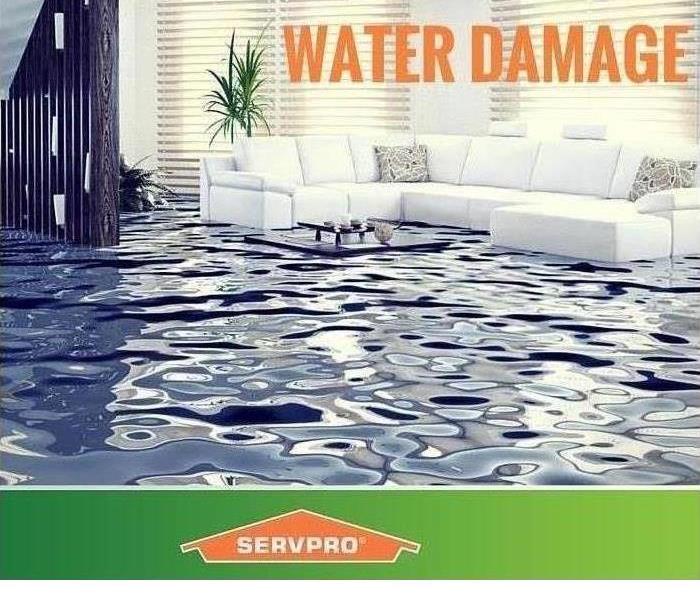Ice Dams
12/3/2021 (Permalink)
To homeowners in snowy, cold-winter climates, ice dams are a familiar sight. an ice dam is a mass of ice that gathers along the lower edge of a roofline where it overhangs the edge of the home. An ice dam can damage both your roof and the inside of your home, and put gutters and downspouts at risk.
How do ice dams form?
- Not enough insulation in your attic.
- Not enough ventilation in your attic
- Poorly insulated areas like outlets, light fixtures, and attic doors, that allow warm air to sneak up into your attic.
- Fluctuating temperatures
- Radiant heat from the sun.
- Perfect temperatures. When temperatures sit between 30 and 32 degrees, right at freezing or just under freezing.
Ice dams form when heat inside your home enters the attic and melts the snow. As water drips down your roof, it re-freezes as it reaches the colder eaves (the part of the roof that overhangs your wall). They develop because of the architecture of the home, ventilation, as well as insulation and heat loss that is escaping into the attic.
What kind of damage can an ice dam cause?
Ice dams can cause severe damage to your home. If left untreated, they can tear off your gutters, loosen shingles, and cause water to back up under those shingles and drain into your home. Water that cannot drain properly works its way under your roof covering and flows into the attic.
Permanent fixes for ice dams
Ventilate eaves and ridge. A ridge vent paired with continuous soffit vents circulates cold air under the entire roof. Both ridge and soffit vents should have the same size openings and provide at least 1 square foot of opening for every 300 square feet of attic floor. Place baffles at the eaves to maintain a clear path for the airflow from the soffit vents.
Cap the hatch. An unsealed attic hatch or whole-house fan is a massive opening for heat to escape. Cover them with weather stripped caps made from foil-faced foam board held together with aluminum tape.
Exhaust to the outside. Make sure that the ducts connected to the kitchen, bathroom, and dryer vents all lead outdoors through either the roof or walls, but never through the soffit.
Add insulation. More insulation on the attic floor keeps the heat where it belongs. To find how much insulation your attic needs, check with your local building department.
Install sealed can lights. Old-style recessed lights give off great plumes of heat and can’t be insulated without creating a fire hazard. Replace them with sealed “IC” fixtures, which can be covered with insulation.
Flash around chimneys. Bridge the gap between chimney and house framing with L-shaped steel flashing held in place with unbroken beads of a fire-stop sealant. Using canned spray foam or insulation isn’t fire safe.
Seal and insulate ducts. Spread fiber-reinforced mastic on the joints of HVAC ducts and exhaust ducts. Cover them entirely with R-5 or R-6 foil-faced fiberglass.
Caulk penetrations. Seal around electrical cables and vent pipes with a fire-stop sealant. Also, look for any spots where light shines up from below or the insulation is stained black by the dirt from passing air.
Be prepared for anything this winter, and if disaster strikes call SERVPRO of Spencer & Iowa Great Lakes at (712) 262-4379.






 24/7 Emergency Service
24/7 Emergency Service
